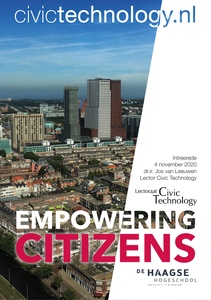Het proces van veroudering heeft effect op de functionele capaciteit van de mens. Daarnaast heeft elke afzonderlijke pathologie haar eigen impact, waarbij klassieke patronen gemaskeerd kunnen worden door verouderingssymptomen, door de aanwezigheid van een andere pathologie of zelfs door het effect van medicatie die gebruikt wordt voor een andere pathologie. Dit vergt in het diagnostische proces meer kennis en kunde van de fysiotherapeut, maar ook meer inzicht in dat proces zelf om kritisch te kunnen blijven reflecteren op het eigen handelen. Het proces waarmee de fysiotherapeut tot een fysiotherapeutische diagnose komt heet klinisch redeneren en is in de geriatrie van essentieel belang.
LINK
Lage rugpijn wordt veelal beschouwd als een multifactorieel probleem, waarbij biologische en psychosociale factoren, comorbiditeiten en pijnprocessen een rol spelen. Bij mensen met lage rugpijn komen bepaalde aandoeningen, zoals plasklachten, vaker voor dan bij mensen zonder lage rugpijn. Plasklachten kunnen aanwezig zijn bij de opslag van urine in de blaas, tijdens of na het plassen. Rugpijn en plasklachten kunnen voorkomen bij patiënten bij wie ze misschien niet direct te verwachten zijn. Deze klachtenbeelden kunnen elkaar overschaduwen. De aanwezigheid van deze rugpijn of plasklachten kan leiden tot een lagere kwaliteit van leven of toename van beperkingen. Dit artikel biedt ruimschoots aandacht aan plasklachten als een belangrijke comorbiditeit bij personen met rugpijn, en beschrijft epidemiologie, etiologie, anatomie en pathologie. Verder komen middelen aan de orde die een fysiotherapeut kan inzetten om patiënten met rugpijn en plasklachten adequate zorg te bieden.
LINK
In ons dagelijkse leven hebben we veel met technologie te maken, vaak met interactieve, informatie-gerichte technologie: als consument doen we online boodschappen – zeker in deze pandemische tijd; als reiziger in het openbaar vervoer plannen en betalen we onze reis met interactieve technologie – nu weliswaar even wat minder; als weggebruiker navigeren we op basis van technologie; en ons energieverbruik in huis wordt ‘smart’ gemeten en geadministreerd. Als burger staan we steeds vaker middels technologie in contact met overheden. Denk aan alle online communicatie met de overheid, zo als de belastingdienst en gemeenten die middels apps, websites en de ‘Berichtenbox’ van ‘MijnOverheid’ met burgers communiceren. En er wordt over burgers en ons gedrag al heel wat data verzameld, door gemeenten, de politie, door bijvoorbeeld de zorgsector. En ook in de publieke ruimte wordt data verzameld – met smart city technologie, zoals camera’s en sensoren – met als doel om de stad veiliger, efficiënter en leefbaarder te maken. Al die ‘big data’ maakt het mogelijk om inzichten te genereren – al dan niet met kunstmatige intelligentie – en besluiten te nemen. We gebruiken technologie ook om als burger zelf actie te ondernemen. Bij de overheid kunnen we met apps melden wat er op straat verbeterd of onderhouden moet worden. Met onze buren zitten we in een WhatsApp groep of NextDoor, om bij te dragen aan de leefbaarheid en veiligheid van de buurt. We kunnen met smart home tools of citizen science kits de luchtkwaliteit meten, binnenshuis, maar ook buitenshuis. We tekenen petities, doen mee aan peilingen en enquêtes. En social networking sites (SNS) worden intensief gebruikt, voor sociale en professionele relaties, maar ook om maatschappelijk actief te zijn, voor het organiseren van het samenleven in een buurt. We weten inmiddels dat social media ook een effectief kanaal zijn om de democratie te beïnvloeden. Burgers komen dus in aanraking met veel verschillende technologieën, met verschillende doelstellingen, resultaten en bijeffecten, en waaraan mensen in allerlei functies en rollen deelnemen. Wat centraal staat in het vakgebied Civic Technology is dat de technologie in dienst staat van het burgerschap.
DOCUMENT
